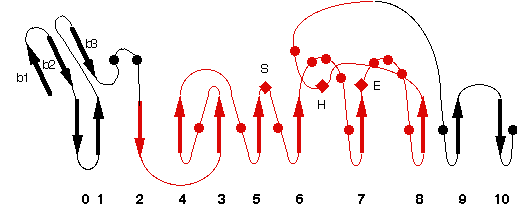7QHD
Name : Human Butyrylcholinesterase in complex with (S)-1-(4-((2-(1H-indol-3-yl)ethyl)carbamoyl)benzyl)-N-(3-((1,2,3,4-tetrahydroacridin-9-yl)amino)propyl)piperidine-3-carboxamide, compound 39
Revelation date : 21-Dec-2022
Family : BCHE
Gene_locus : human-BCHE
PDB file : ESTHER: header of PDB entry RCSB: Full entry
Comment
Lanlan Jing, Wenxiu Wei, Bairu Meng, Fabien Chantegreil, Florian Nachon, Ana Martnez, Gaochan Wu, Huajun Zhao, Yuning Song, Dongwei Kang, Xavier Brazzolotto, Peng Zhan, Xinyong Liu
Ligand :
References (1)
| Title : Rapid discovery and crystallography study of highly potent and selective butylcholinesterase inhibitors based on oxime-containing libraries and conformational restriction strategies - Jing_2023_Bioorg.Chem_134_106465 |
| Author(s) : Jing L , Wei W , Meng B , Chantegreil F , Nachon F , Martinez A , Wu G , Zhao H , Song Y , Kang D , Brazzolotto X , Zhan P , Liu X |
| Ref : Bioorg Chem , 134 :106465 , 2023 |
| Abstract : Jing_2023_Bioorg.Chem_134_106465 |
| ESTHER : Jing_2023_Bioorg.Chem_134_106465 |
| PubMedSearch : Jing_2023_Bioorg.Chem_134_106465 |
| PubMedID: 36933339 |
| Gene_locus related to this paper: human-BCHE |
Representative scheme of Prolylcarboxypeptidase structure and an image from PDBsum server

